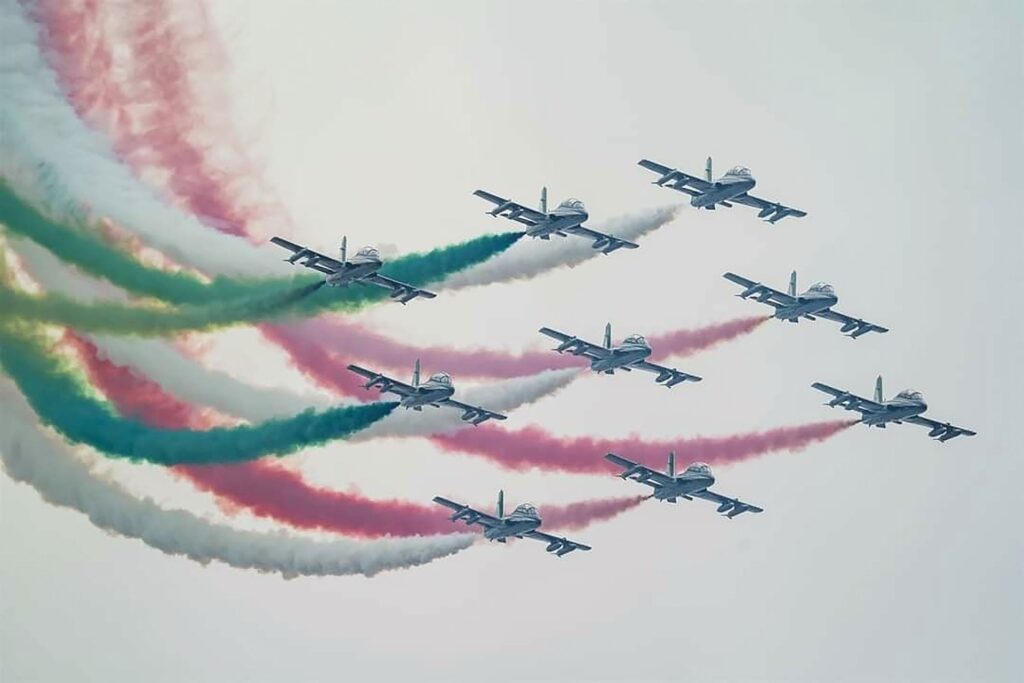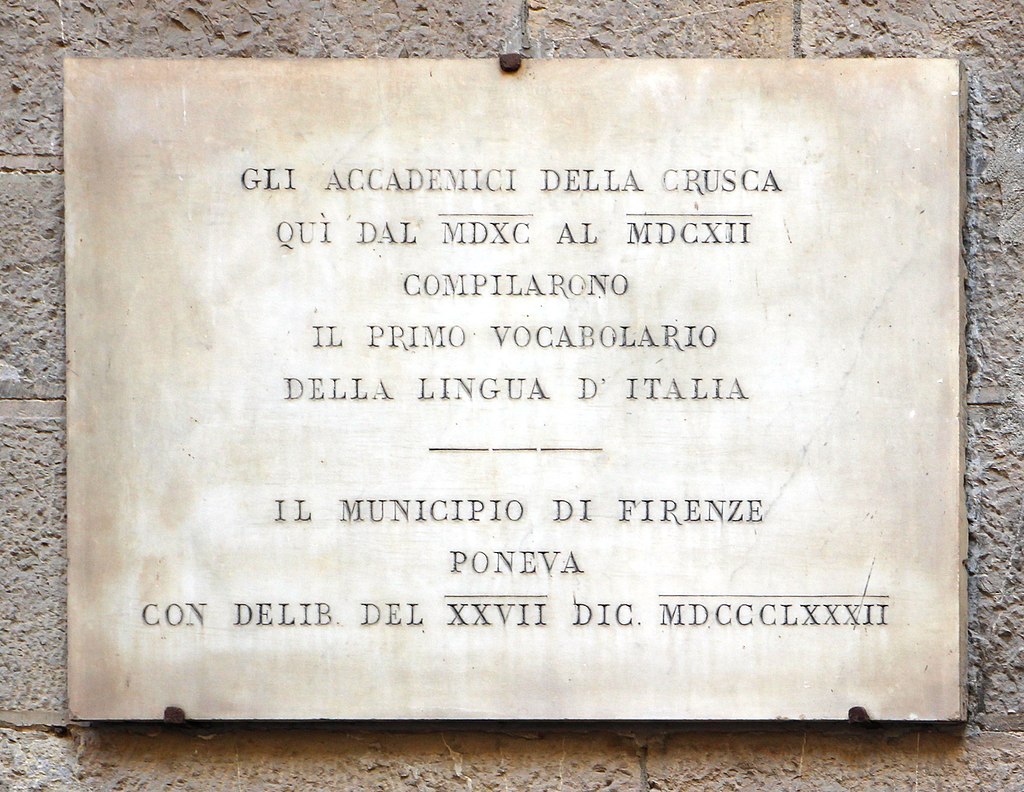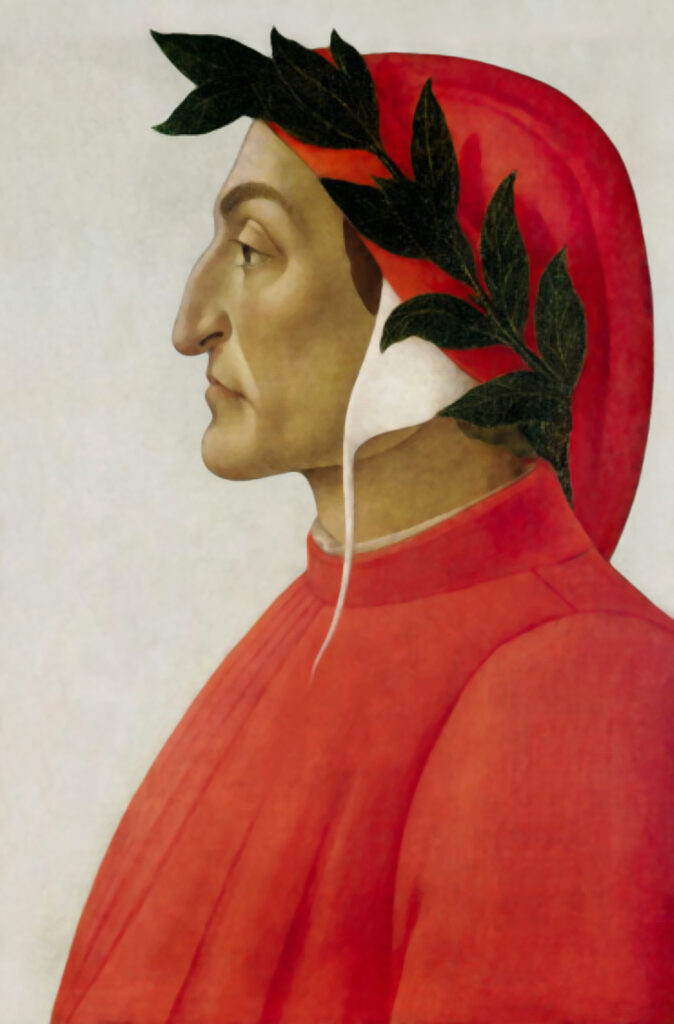Week of Italian Language in the World
The Week of the Italian Language in the World is an international cultural event that has been held every year since 2001 in October, at the initiative of the then president of the Accademia della Crusca Francesco Sabatini, with the aim of promoting the Italian language, worldwide.

Over time, the Week of the Italian Language in the World has become one of the most important initiatives dedicated to the celebration of the Italian language in the world, and each edition is devoted to a specific theme concerning the area of use of the Italian language.
The Week of the Italian Language in the World has been held every year since 2001 in the third week of October, under the patronage of the President of the Italian Republic, and involves multiple entities and subjects, including: associations of Italians abroad, chairs of Italianistics and Romanistics at universities, committees of the Dante Alighieri Society, Accademia della Crusca, Istituto dell’Enciclopedia Italiana Treccani, Italian consulates, Italian cultural institutes abroad, and to the Government of the Helvetic Confederation.
The 2022 edition, scheduled for October 17-23, will have as its theme “L’italiano e i giovani” (Italian and Young People), with the aim of exploring the ways in which languages and communication tools are evolving through generations of digital natives, with a view to transmitting, in Italy and abroad, the image of a language and, with it, of a country strong in its past, but at the same time alive and creative in the present. In the same spirit, the competition “Invent the title of SLIM 2022,” aimed at Italian state and paritarian schools abroad, was launched, giving voice precisely to the young people who chose the event’s subtitle, “Come scusa? Non ti followo” (How excuse? I don’t follow you) proposed by the students of the Italian School of Montevideo.

Italian language in brief
Italian is a neo-Latin language, that is, derived from Vulgar Latin spoken in Italy in Roman antiquity and profoundly transformed over the centuries.
Already in classical times there was a “vernacular” use of Latin, which has come down to us through non-literary texts, graffiti, unofficial inscriptions or literary texts careful to reproduce the spoken language, as is often the case in comedy.
With the fall of the Roman Empire and the formation of the Romano-Barbaric kingdoms, there was a sclerotization of written Latin (which became an administrative and scholastic language), while spoken Latin merged more and more intimately with the dialects of the Latinized peoples, giving rise to the Neo-Latin languages, including Italian.
The written vernacular language around 1200 was also used in some literary texts, and in 1224 the famous “Canticle of Creatures” by St. Francis of Assisi, written in the Umbrian vernacular, was published.
The structure of Italian descends, from that of the fourteenth-century Florentine vernacular: the role of this vernacular in the formation of Italian is so important that in some cases language historians already describe fourteenth-century Florentine as “ancient Italian” and not as “Florentine vernacular.” At the time the three greatest and most famous vernacular writers of the century, Dante, Petrarch and Boccaccio, were Tuscans moreover, in the 14th century Florence was considered an economic and cultural power.
In the Italian language, great importance was given to Dante Alighieri, Pietro Bembo and Alessandro Manzoni, theorists and innovators of Italian, who were particularly interested in the issue of the stylistic differences of written and spoken language: Dante was the first to intuit the potential of the vernacular, Bembo established its rules, Manzoni gave literary value to orality.
In 1612 the Accademia della Crusca published the first edition of its Vocabolary, based strictly on the language used by 14th-century Florentine writers.
In the 1700s the influence of French Enlightenment culture results in the entry of a very large number of Frenchisms into the lexicon.
The 1800s is a period marked by a clash between Classicists opposed to Frenchisms and Romantics who wanted a fresher, more modern language: the growth of the middle class leads to the success of the Romantic current. In 1840 Alessandro Manzoni’s “I promessi Sposi” was published in the Florentine language spoken by the middle class. In 1861 political unification was achieved in the Kingdom of Italy, which began the process of linguistic unification of the peninsula, and in 1877 compulsory schooling for two years was instituted even though the majority of the population remained illiterate until the end of the century, that is, they were unable to read, write and spoke only dialect.
During the 20th century, schooling, made compulsory until the age of 14 since 1962, and the work of radio and television, cinema and newspapers drastically reduced anafabetism; in addition, the internal migration flow of the 1950s and 1960s in which large numbers of Italians moved from the poor regions of the South to the large industrial cities of the North, together with the phenomenon of urbanism, (transfer from the countryside to the cities), made it necessary to learn the Italian language. During this century, many Anglicisms were introduced, determined by the prestige achieved in science, technology and economics by English-speaking countries, especially the United States of America.
Today, the Italian language is a dynamic language, constantly and constantly evolving, and from the lexical point of view new words have been introduced due to the influence of foreign languages.
The culture of Italian Grisons remains a… unique heritage
Switzerland and Graubünden for the promotion of Italian and Romansh

The Italian language in the world
In addition to being the official language of Italy, it is also one of the official languages of the European Union, San Marino, Switzerland, the Vatican City and the Sovereign Military Order of Malta.
It is also recognized and protected as a “language of the Italian national minority” by the Slovenian and Croatian constitutions in territories where populations of the Istrian dialect live and in Brazil.
In the past, Italian was the official (or co-official) language, for different periods, in Corsica until 1859, in the Ionian Islands until 1864, in Nice until 1870, in the Principality of Monaco until 1919 and in Malta until 1934. During World War II it was briefly the official language of annexed territories such as the provinces of Ljubljana, Split and Kotor; during the same conflict, or immediately thereafter, it also lost official status in the Slovenian territories of Gorizia and Karst, the island of Cres and the then provinces of Rijeka and Zadar (Croatia), Albania, the Dodecanese, as well as Libya, Ethiopia and Eritrea, and remained an official language in Somalia until 1963.
The Italian language is the fourth most studied language in the world.
The Italian language in Switzerland
In Switzerland, Italian is one of the four official languages along with German, French and Romansh.
The Italian-speaking territory, also known as the Italian-speaking part of Switzerland, consists of the Canton of Ticino and the four Italian-speaking valleys of Canton Graubünden (the Poschiavo, Bregaglia, Mesolcina and Calanca valleys).
As a minority language, Italian in Switzerland enjoys protection and subsidies from the federal and cantonal governments.
The Italian language in Slovenia
Italian is the official language along with Slovenian in the four coastal municipalities of Ankaran, Koper, Izola d’Istria and Piran.
The Italian language in Croatia
Italian is the official language in the region of Istria along with Croatian and is the co-official language in the town of Cres (located on the island of the same name) in Rijeka, Zadar and other coastal towns in Dalmatia.
The Italian language in San Marino
Italian is the national language of state.
The Italian language in the Order of Malta
Italian is the official language and is used on formal occasions and usually at international events or where Italians are in the majority.
The Italian language in Brazil
In Brazil it is the official language in Santa Teresa and Vila Velha, and as such compulsorily taught in schools. In Rio Grande do Sul it is recognized as an official regional language, while in São Paulo it is widespread but not officially considered.
The Italian language in countries where there is no official recognition
In some countries Italian is quite widespread despite not having official recognition: Malta and Albania are the countries where Italian is most widely spoken but also in Argentina (unofficial estimates even indicate more than 5000000 Italian speakers) as well as Canada, France and the USA.

Accademia della Crusca
The Accademia della Crusca is an Italian institution that brings together scholars and experts in linguistics and philology of the Italian language and is one of the most prestigious linguistic institutions in Italy and the world.
The academy was founded in Florence in 1583 by Leonardo Salviati known by the name of Infarinato who and actively contributed to the drafting of the Vocabulary and in 1585 was officially established around a statute.
The origin of this institution has an altogether “anti-academic” prologue in that its founders had initially called themselves the Crusconi brigade and constituted a sort of circle whose members used to gather on merry convivial occasions, during which they recited for fun “cruscate,” that is, learned discourses but in a playful and joking style. Their stated intention, which is already evident from their choice of name, was to break away from the pedantry of the Florentine Academy, protected by Grand Duke Cosimo I de’ Medici, and to contrast it with its severe, classicist style. The crusconi also fought against classicist pedantry with humor, satire, and irony, without compromising the group’s primary intention, which was purely literary, and often explicated in highbrow literary disputes.
The Crusca is the oldest linguistic academy in the world, and in more than four centuries of activity it has always distinguished itself for its strenuous efforts to keep the Italian language “pure,” publishing, as early as 1612, the first edition of the Vocabolario degli Accademici della Crusca, which served as a lexicographical example for the French, German, and English languages as well.
In 1636, Cardinal Richelieu created the Académie française on the model of the Accademia della Crusca.
Today, the Academy is part of the European Federation of National Language Institutions, whose task is to develop a common line of protection for all European national languages.

Dante Alighieri
Dante Alighieri, born Durante di Alighiero degli Alighieri also known simply by the name Dante, was born in Florence in the then Florentine Republic (now Italy), in 1265 and died in Ravenna in the then Papal States (now Italy), in 1321, was an Italian poet, writer and politician considered the father of the Italian language.
His fame is due to the Divine Comedy universally considered the greatest work written in the Italian language and one of the greatest masterpieces of world literature.
Dante has become one of the symbols of Italy in the world, thanks to the name of the main body of the dissemination of the Italian language, the Dante Alighieri Society, founded in 1889 by a group of intellectuals led by Giosue Carducci whose purpose is to protect and spread the Italian language and culture in the world.





